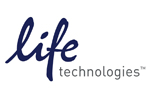08:00 | Registration |
|
Session: Tools & Technologies for Single Cell Analysis |
| |
09:00 |  | Keynote Presentation 34 Parameter Single-Cell Mass Cytometry Delineates Clinically and Mechanistically Relevant Leukemic Differentiation Substructures
Garry Nolan, Professor, Stanford School of Medicine, United States of America
Single-cell ‘mass cytometry’ was used to index surface and cytokine or drug responsive of kinase targets with 34 parameter analysis in 10s of millions of healthy human blood and bone marrow cells. In leukemias we identified multiple anomalous differentiation states and drug reactivities in presumably “heterogeneous” tumours, thus defining novel hierarchies in tumors that could be subjected to differential clinical outcomes and novel treatment regimens. |
|
09:30 | From Single Cell Signaling Analysis to Simulated Physiological Systems: Advances in the Application of Microfluidic Technology Towards Deciphering Today’s Biological Mysteries
Shannon Faley, Research Fellow, Vanderbilt University, United States of America
This talk, based upon the past 8 years of implementing our microfluidic nanophysiometer towards understanding adaptive immune response, response of leukemic cells to chemotherapeutic agents, and stem cell mediated cardiac repair following myocardial infarction, aims to demonstrate such microfluidic platforms as a powerful means for understanding important processes on a cellular level. The future of microfluidic technology, including integration with additional detection modalities to creating better system models, will also be discussed. |
10:00 | Single Cell and Subcellular Metabolic Analysis by Mass Spectrometry
Akos Vertes, Professor, George Washington University, United States of America
In this presentation two new ionization platforms are described for the direct analysis of single cells and subcellular components: an ambient method called laser ablation electrospray ionization (LAESI) and an ultrasensitive nanophotonic ion source based on silicon nanopost arrays (NAPA). |
10:30 | Coffee Break and Networking in the Exhibition Hall |
11:15 | Uncovering New Stem Cell Sub-Populations: A Novel High-Throughput Single Cell Analysis Technology
Ivan Dimov, Instructor, Stanford University, United States of America
Using a 20 pico-liter-well array we have demonstrated the first discrimination of sub-populations based on gene-expression measurements. Measuring over 300 single-cell observations is essential to overcoming experimental noise. Analyzing pure HSCs, we have identified genes candidates that fractionate the population. |
11:45 | Neurometabolomics: The Cell by Cell Chemical Characterizations of the Brain
Jonathan Sweedler, Director, University of Illinois, United States of America
The chemical complexity of many cell samples is surprisingly high so that measures of the average values of the constituents from populations of cells obscures critical information about select cells. Several single cell measurement approaches are highlighted to measure the cellular metabolome. |
12:15 | A Workflow for Single-Cell Resolution, Automated, Image-Based Sorting of Pure Circulating Tumor Cells and Their Comprehensive Molecular Characterisation
Nicolò Manaresi, Chief Technology Officer, Silicon Biosystems, Italy
Some of the key challenges to unlock the potential of Circulating Tumor Cells (CTC) in personalized therapy and translational research are related to the low level of purity provided by enrichment techniques, and the small number of CTCs available. We demonstrate a methodology addressing these challenges, based on the DEPArray™ system to sort multiple individual 100%-pure CTCs, followed by Whole Genome/Transcriptome Amplification for their molecular analysis. |
12:45 | Lunch and Networking in the Exhibition Hall |
12:45 |  Free Workshop Free Workshop
Single Sample, Single Slice, Single Prep, Single Well… Multiple Answers
|
13:30 | Poster Session |
14:15 | Single Cell Microarray of Mouse Cardiomyocytes During Aging and in a Novel Model of Cardiac Oxidative Stress
James Flynn, Field Application Scientist, NextBio, United States of America
This presentation will entail single cell microarray and quantitative PCR to defining a novel model of heart disease. heart function is used as a metric by which we are correlating expression changes and stochastic variance between single cells. |
14:45 | Tracking single hematopoietic stem cells in vivo using high-throughput sequencing in conjunction with DNA barcoding
Rong Lu, Postdoctoral Scholar, Stanford University, United States of America
We present a novel experimental system combining viral cellular barcoding with high-throughput sequencing to track single cells in vivo development. It can be applied to the clonal tracking of in vitro or in vivo processes for virtually any cell type. |
15:15 | Coffee Break and Networking in the Exhibition Hall |
|
Session: Detection, Isolation and Analysis of CTCs |
| |
16:00 | RT-qPCR in the Analysis of Single Circulating Tumor Cells
Katharina Pachmann, Professor, University of Jena, Germany
Determination of the eterogeneity of circulating tumor cells at the single cell level will allow pharmaceutical companies ro characterize thse cells as true targets of systemic therapy and design the respective drugs according to targets expressed on these cells. |
16:30 | Digital CastPCR for Direct Detection of Circulating Tumor Cells in Cancer Patients
David Deng, Senior Manager, Life Technologies, United States of America
Use digital cell-by-cell analysis for direct detection of circulating tumor cells in cancer patients using castPCR has a great potential in early cancer detection and care. |
17:00 | Toward Multiplexed Sequencing of Single CTCs and DTCs Using Next-Gen Sequencing
John Langmore, Chief Scientific Officer, Rubicon Genomics Inc, United States of America
Next-generation sequencing of single cells must be accurate, reproducible, rapid, and inexpensive for use in research and diagnostics. Indexed PicoPlex NGS preps of cloned cancer and normal cells gave accurate, reproducible, and inexpensive multiplexed copy number and mutation analysis. |
17:30 |  Technology Spotlight: Technology Spotlight:
Identifying and Characterizing Subpopulations by Single Cell Analysis
Richard Fekete, Senior Manager, Life Technologies
Small subpopulations of cells are often lost when looking at large numbers of cells in each sample. These cells are often very important phenotypically, and can provide a great deal of information about the fate or impact of the entire population. Using single cell analysis these cells can be identified and thoroughly characterized.
|
18:45 | Drinks Reception |




